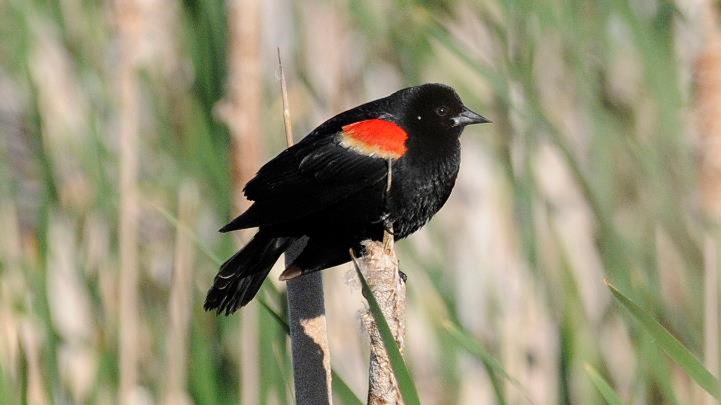Agelaius phoeniceus

The familiar “conk-a-ree” call of the Red-winged Blackbird coming from the cattails of a marsh is a sure sign of spring’s return in the north.
Habitat
Look for Red-winged Blackbirds in summer across most of Canada where it is wet, with plenty of plants growing. Places such as fresh and salt-water marshes, roadside ditches, and the edges of some lakes and rivers. Winter takes them to the United States, Mexico, and parts of Central America and the Caribbean, where they join residents that do not migrate.
Food
Red-winged Blackbirds feed mainly insects over summer, switching to seeds in winter.
Behaviour
Male Red-winged Blackbirds are highly territorial during the nesting season. They defend up to 15 mates. Females, who are striped brown, build their nest of long leaves and grasses woven to upright plant stems, like cattail, just above the water or ground. Anywhere from 2 to 4 eggs are incubated for about twelve days. Outside of nesting, Red-winged Blackbirds flock together in large groups. Fall and winter sees them together with other blackbird species in mixed flocks.
Conservation
Red-winged Blackbirds are common and abundant. They are of low conservation concern. However, their numbers have declined slightly overall since the 1960s.

